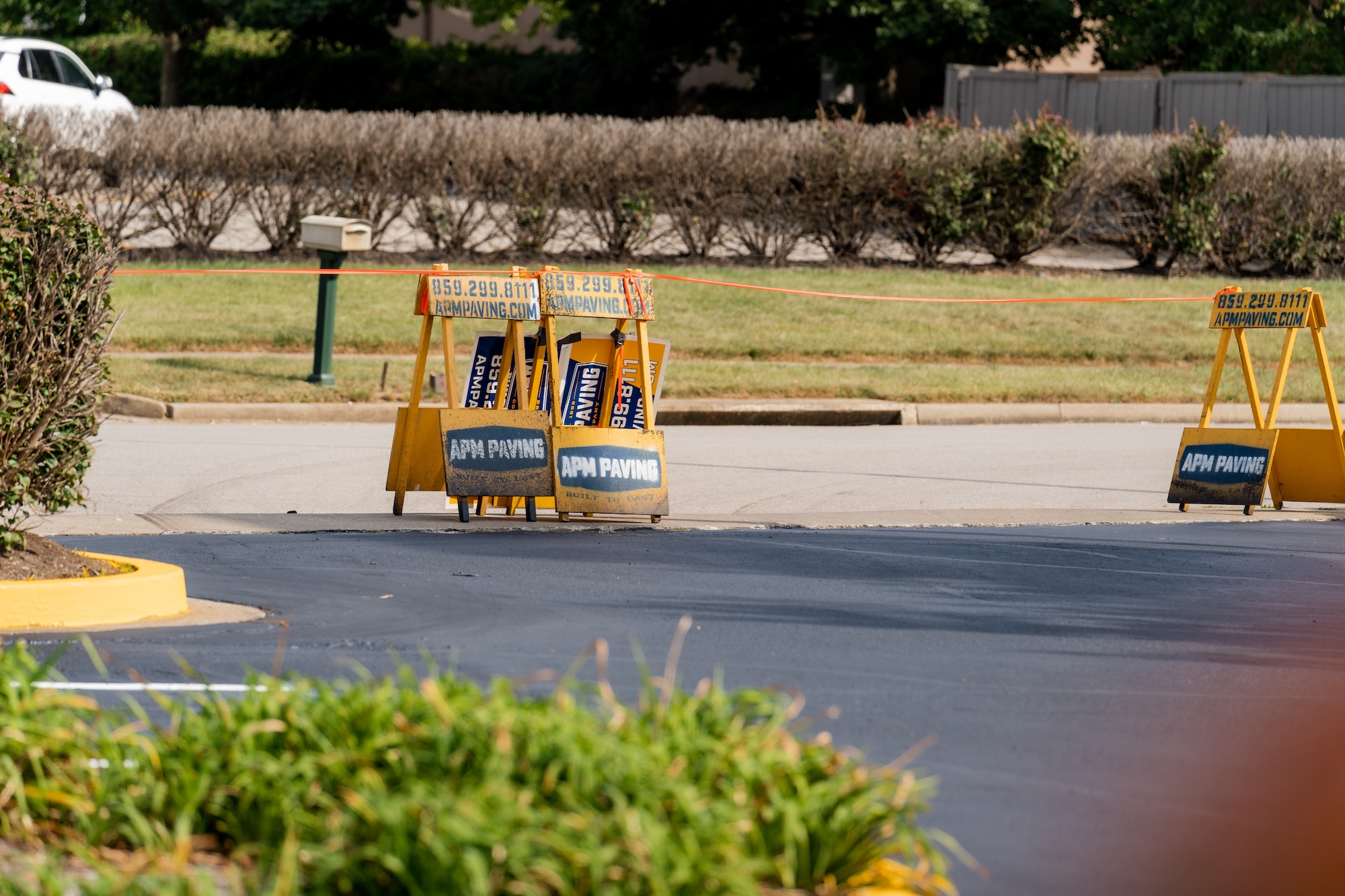6 Basic Steps to Prep for Pothole Repairs
To paraphrase an old saying, an ounce of preparation is worth a ton of cure. Regardless of what needs to be repaired, proper preparation is the key to achieving the desired results. When they are getting ready to make repairs to your asphalt pavement, your contractor’s crew members will make sure that the work area and the area to be repaired have been prepared correctly.
- Control Traffic
- Mark the Damaged Area
- Clean the Surrounding Area
- Make sure the area is dry
- Prepare the sides and bottom
- Immediately install the repair material
Step 1: Control pedestrian & vehicle traffic
Traffic control ensures the safety of the workers as well as anyone who might venture onto your property. Depending on the circumstances, traffic control may involve erecting barricades, taping off the area, placing signs or using flaggers to direct traffic.
Step 2: Mark the damaged area(s)
Workers may use chalk to draw attention to cracks that need to be repaired or to mark the area around a pothole that is to be removed. If pavement is to be removed, the chalk lines will normally encompass an extra foot or so of sound pavement. Pavement that must be removed will be cut out.
Step 3: Adequately clean the area
Whether it is an area where the pavement has been removed or a crack that needs to be filled, the workers will clean it thoroughly. There are various tools that can be used for cleaning. For example, compressed air may be used to blast out any debris, a drill-mounted wire wheel may be used or a heat lance may be employed to clean a crack. If the walls inside the crack are particularly jagged, a router may be used to smooth them or widen the crack a bit.
Step 4: Dry the entire area
The interior of the crack or hole must be dry for proper adhesion to occur. Hot air is often used for drying, but an increasing number of contractors have embraced heat lances for ensuring that cracks are sufficiently dry.
Step 5: Prepare the sides and bottom of the affected area
The type of repair dictates the precise preparation needed. For example, for a pothole repair involving the removal of the old pavement, a tack coat may be applied to the sides of the existing pavement to ensure a strong bond. In some instances, it may be advantageous to insert a special fabric into a crack before filling it.
Step 6: Install the repair material immediately
Once the area to be repaired has been cleaned, dried and prepped, the material should be installed immediately to prevent dirt or moisture from intruding. The choice of material depends on the nature of the repair, the weather and the condition of the surrounding pavement. If pavement has been removed, it will probably be replaced with hot-mix asphalt that is applied in layers; each layer will need to be compacted before the next course is applied. When it comes to crack filling and sealing, your contractor will have a number of options from which to choose. He will base his decision on the size of the crack, whether the crack has been expanding, the temperature and other factors that could affect the longevity of the repair.
The paving experts at APM Paving are ready to help. No matter the size.
APM is an asphalt paving company in Lexington, KY and has more than 35 years of experience in the installation, repair and pavement maintenance. We offer asphalt paving and asphalt patching, sealcoating, concrete installation and repair, parking lot striping, asphalt milling, site work, curbing, pavement reinforcement, parking lot signs and car stops. We are known for our craftsmanship, professionalism, creativity and responsiveness. If you need exceptional results at affordable prices, we can help. For a free estimate, use the online form to contact us or call our office at (859) 299-8111.





